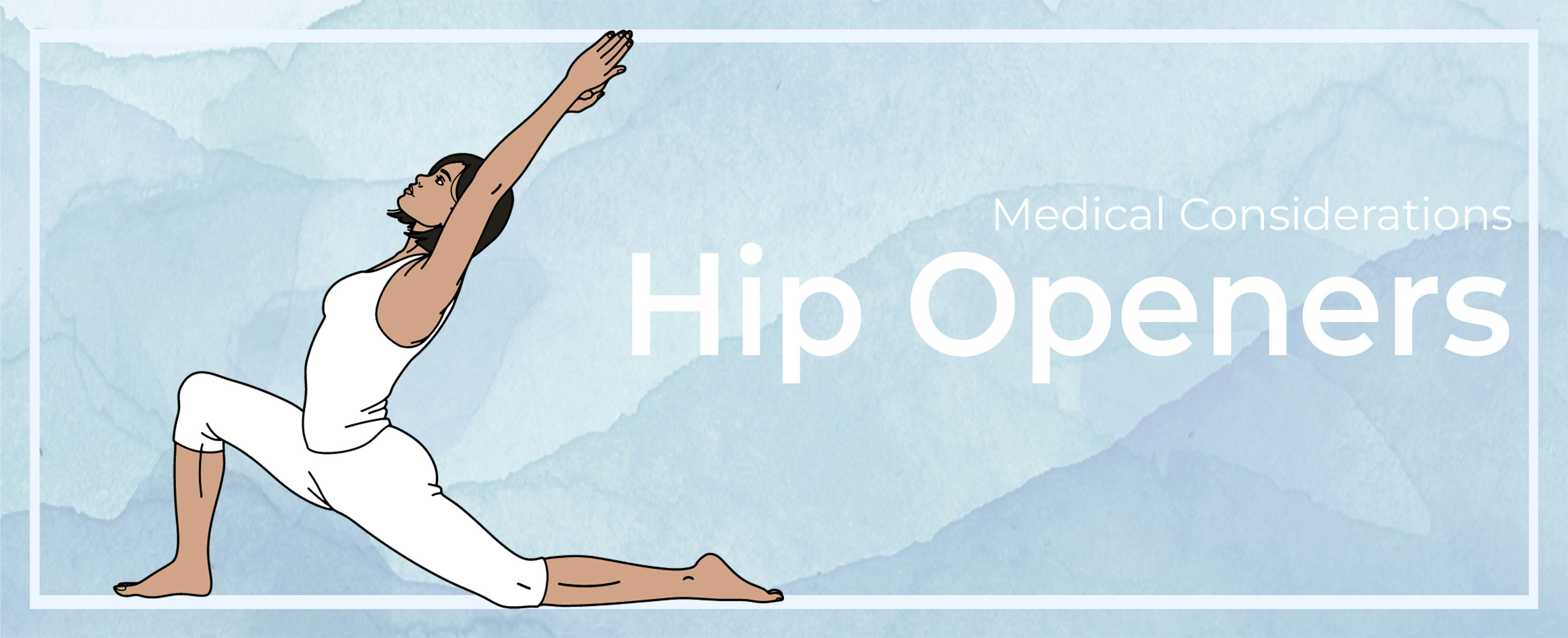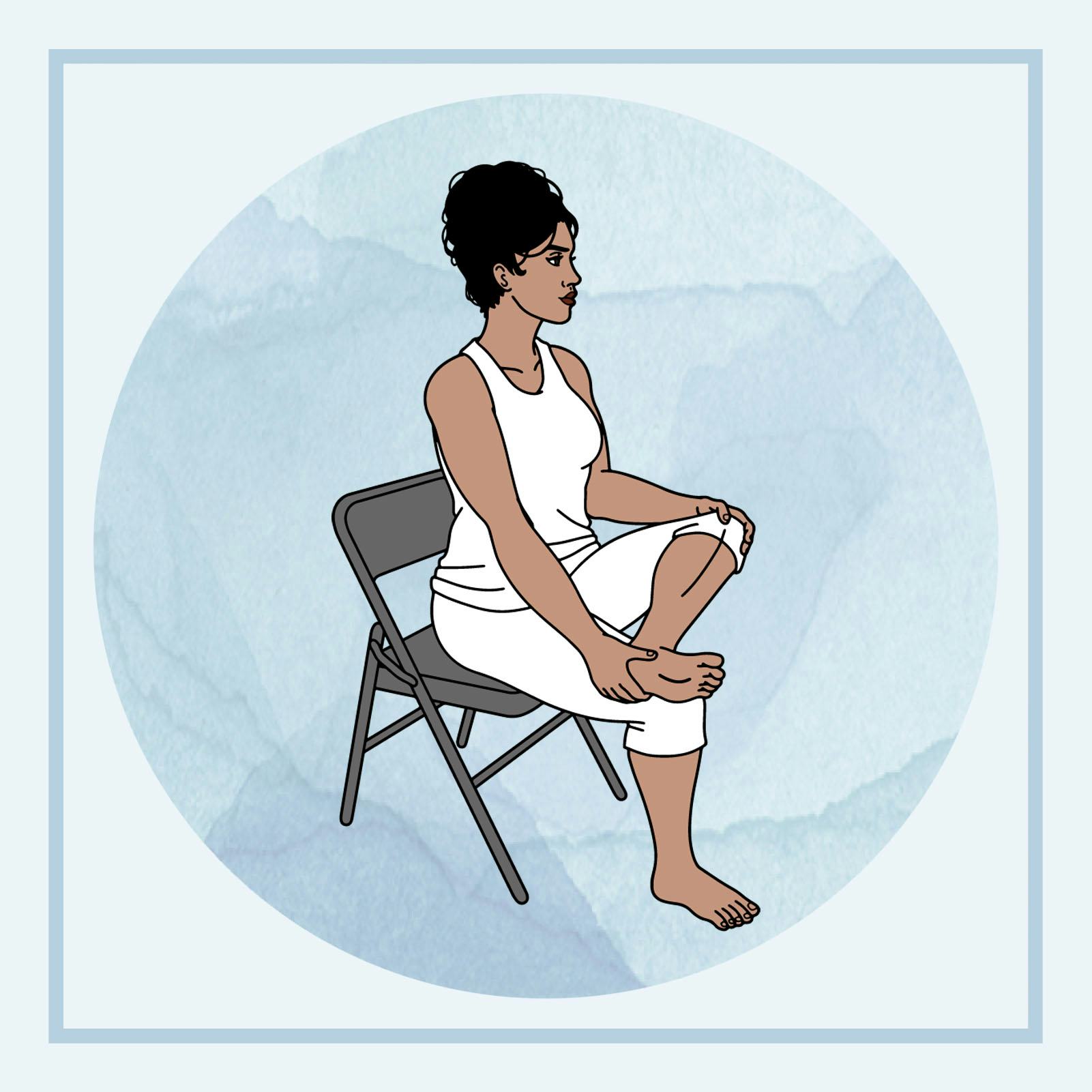Medical Considerations for Hip Opening Poses
Asana Focus: Hip Openers

Description of Physical Action
The hip is a triaxial joint (functions in 3 planes of motion). It is the proximal link to the lower extremities, where forces are transmitted upward from lower extremities, through hips, to pelvis and on to trunk during activity. The hip is constructed for weight bearing, and is support for the weight of the head, upper extremities, and trunk. The joint capsule contains many mechanoreceptors that respond to position, stress, movement, postural control, and balance. Good hip joint range of motion stimulates circulation to muscles and the bones of the thighs, pelvis, and lower back. Developing strength in the muscles surrounding the hip joint improves dynamic support to the spine and the knee joint.

Valued experience over centuries of practice, and historically described benefits of hip opening asanas:
- Taking the thigh behind the pelvis lengthens the psoas muscle, which may help to alleviate back pain in those with loss of psoas flexibility
- Balances muscular length and strength around the hip joint, which may positively influence alignment of the sacrum, knees, and feet
- Require attention to alignment cues for the feet that can also positively influence how the thigh is positioned in the hip socket located in the pelvis
- Positioning the thigh forward and towards the opposite shoulder lengthens the piriformis muscle, which may be helpful for relieving some forms of sciatica.
- Squeezing and releasing the lymph nodes of the groin may assist lymphatic, possibly providing immune support while also decongesting any swelling present in the lower limbs
- Can create a stable base for sitting more comfortably in meditation practice
- A degree of pelvic stabilization is maintained which strengthens the low back while opening the hips
- Also tone the muscles of the pelvic floor, providing support for pelvic organs

Potential contraindications:
Variations are recommended for those with:
- Back, knee, or hip pain
- Inguinal hernia or tightness with significant motion restriction
- Significant bone density loss or recent history with thigh fractures
- Hip replacement surgery patients with less than four months of recovery should not practice this category without clearance from surgeon
- Hip joint dysplasia, hyper-flexibility or snapping sensations with hip motion
- Recent hysterectomy, until cleared by surgeon
- Postures done in a supine position can stabilize the low back
Also note: The negative reaction that often occurs when a practitioner with a history of sexual trauma practices hip openers, and the prevalence of practitioners with a history of sexual trauma, requires special attention and the use of a trauma informed approach.

